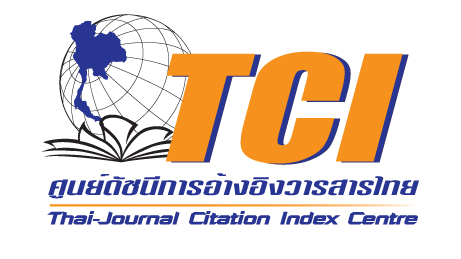Assessment of Health Risks from Cadmium and Lead Contamination in Aquatic Animals near the Kwai Noi River
DOI:
https://doi.org/10.53848/ssstj.v12i1.985Keywords:
Cadmium, Lead, Aquatic Animals, Health Risk AssessmentAbstract
This study assesses the health risks associated with cadmium and lead contamination in aquatic animals consumed by local populations near the Kwai Noi River in Makham Sung Subdistrict, Phitsanulok, Thailand. Four commonly consumed species—freshwater shrimp, pond snails, silver barb, and Nile tilapia—were analyzed for cadmium and lead levels. The results show that freshwater shrimp and pond snails contained the highest levels of contamination, although these levels were within Thai food safety standards for cadmium (0.20 mg/kg) and lead (1 mg/kg). Health risks were evaluated using Chronic Daily Intake (CDI) and Hazard Quotients (HQ), revealing no significant immediate risk to consumers, as HQ values remained below 1. Lead intake, though classified as carcinogenic, was found to be significantly below the tolerable daily intake. Community participation played a key role in knowledge dissemination and risk management, with the study emphasizing the need for ongoing monitoring and public education to mitigate long-term bioaccumulation risks.
References
Burger, J., Gochfeld, M., Jeitner, C., Pittfield, T., & Donio, M. (2014). Heavy metals in fish from the Aleutians: interspecific and locational differences. Environmental research, 131, 119–130. https://doi.org/10.1016/j.envres.2014.02.016
Godt, J., Scheidig, F., Grosse-Siestrup, C., Esche, V., Brandenburg, P., Reich, A., & Groneberg, D. A. (2006). The toxicity of cadmium and resulting hazards for human health. Journal of occupational medicine and toxicology (London, England), 1, 22. https://doi.org/10.1186/1745-6673-1-22
Lars Järup, Hazards of heavy metal contamination, British Medical Bulletin, Volume 68, Issue 1, December 2003, Pages 167–182, https://doi.org/10.1093/bmb/ldg032
Lanphear, B. P., Hornung, R., Khoury, J., Yolton, K., Baghurst, P., Bellinger, D. C., Canfield, R. L., Dietrich, K. N., Bornschein, R., Greene, T., Rothenberg, S. J., Needleman, H. L., Schnaas, L., Wasserman, G., Graziano, J., & Roberts, R. (2005). Low-level environmental lead exposure and children's intellectual function: an international pooled analysis. Environmental health perspectives, 113(7), 894–899. https://doi.org/10.1289/ehp.7688
Nguyen, H. L., Leermakers, M., Elskens, M., De Ridder, F., Doan, T. H., & Baeyens, W. (2005). Correlations, partitioning and bioaccumulation of heavy metals between different compartments of Lake Balaton. The Science of the total environment, 341(1-3), 211–226. https://doi.org/10.1016/j.scitotenv.2004.09.019
Roozbahani, M.. (2017). Heavy metal concentrations in different tissues of Euryglossa orientalis, Chirocentrus nudus and sediments in Bahrekan Bay (the northwest of Persian Gulf). Iranian Journal of Fisheries Sciences. 16. 945-958.
FAO/WHO. (2003). Codex Alimentarius Commission: Standard for Contaminants and Toxins in Foods.
European Commission. (2006). Commission Regulation (EC) No 1881/2006 setting maximum levels for certain contaminants in foodstuffs.

Downloads
Published
How to Cite
Issue
Section
License
Copyright (c) 1970 Suan Sunandha Rajabhat University

This work is licensed under a Creative Commons Attribution 4.0 International License.











